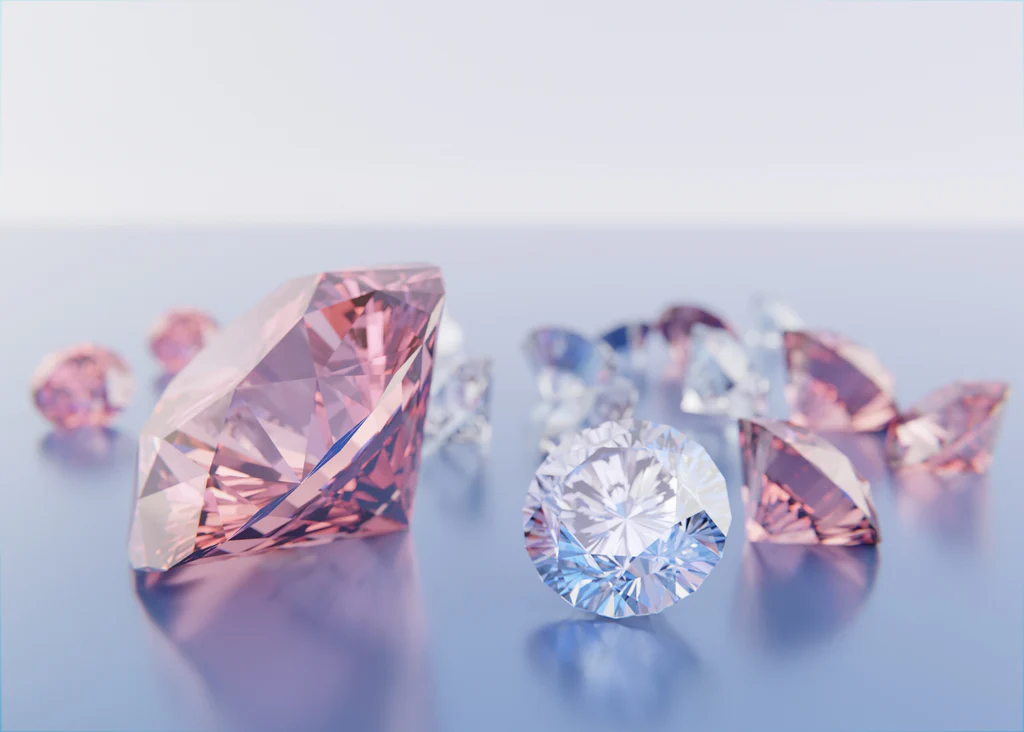In recent years, lab grown diamonds have made a significant impact on the jewelry market. These diamonds, also known as lab made diamonds, offer a sustainable alternative to mined diamonds. As consumers become more conscious of the environmental and ethical implications of their purchases, lab grown diamonds have gained traction for their eco-friendly and affordable nature. But what exactly are lab grown diamonds, and why are they becoming so popular?
What Are Lab grown diamonds?
Lab grown diamonds, also called lab made diamonds, are diamonds that are created in a controlled laboratory environment. They share the same physical, chemical, and optical properties as natural diamonds but are produced using advanced technology. Unlike natural diamonds, which are formed over millions of years deep within the Earth’s crust, lab grown diamonds are made in a fraction of the time, often within a few weeks.
There are two primary methods used to create these diamonds: High Pressure High Temperature (HPHT) and Chemical Vapor Deposition (CVD). Both methods replicate the natural conditions under which diamonds form, resulting in real diamonds with the same characteristics as those mined from the Earth.
The Advantages of Lab grown diamonds
Eco-Friendly and Sustainable
One of the primary reasons many consumers are choosing lab grown diamonds is because they are much more environmentally friendly than mined diamonds. Traditional diamond mining can lead to deforestation, soil erosion, and significant water consumption. In contrast, lab grown diamonds require far fewer resources and produce much less environmental damage.
Ethical Considerations
Many consumers are becoming increasingly aware of the ethical issues associated with mined diamonds. The diamond mining industry has been linked to human rights abuses, child labor, and exploitative working conditions. lab grown diamonds, on the other hand, are created in controlled settings where workers are treated fairly and ethically.
Cost-Effective Lab made diamonds
are typically less expensive than their mined counterparts. This is because the production process for lab grown diamonds is more controlled and doesn’t involve the significant costs of mining. As a result, consumers can purchase a larger, higher-quality diamond at a more affordable price.
No Compromise on Quality
Many people assume that lab grown diamonds are inferior to natural diamonds. However, this is not the case. lab grown diamonds are chemically identical to natural diamonds, and they go through the same grading process. They are graded based on the 4 Cs: cut, color, clarity, and carat weight. A lab-made diamond can be as brilliant, clear, and durable as a mined diamond.
The Growing Popularity of Lab grown diamonds in the Jewelry Market
The rise of lab grown diamonds has revolutionized the jewelry industry. In the past, diamonds were viewed as a luxury item that came with a significant price tag. However, as more consumers become aware of the environmental and ethical implications of diamond mining, many are turning to lab made diamonds as a more sustainable and affordable option.
Jewelry brands and designers have also embraced the shift towards lab grown diamonds. Many high-end jewelry designers now offer collections featuring lab grown diamonds, allowing customers to choose from a wide range of stunning engagement rings, necklaces, and other jewelry items that are both beautiful and environmentally responsible.
How Lab grown diamonds Are Made: The Process Behind Their Creation
The process of creating lab grown diamonds is an intricate one, designed to replicate the natural conditions under which diamonds are formed. There are two primary methods for producing these diamonds: the High Pressure High Temperature (HPHT) method and the Chemical Vapor Deposition (CVD) method.
- High Pressure High Temperature (HPHT) Method The HPHT method simulates the extreme pressure and temperature conditions that exist deep within the Earth’s crust. A small diamond seed is placed in a chamber along with carbon and subjected to high pressure and temperatures. The carbon atoms bond to the diamond seed, forming a larger diamond crystal over time.
- Chemical Vapor Deposition (CVD) Method The CVD method involves placing a small diamond seed in a chamber filled with gases such as methane and hydrogen. The gases are heated to high temperatures, causing the carbon atoms to deposit onto the seed, gradually building up into a diamond crystal. This method is considered to be more precise and allows for better control over the quality of the resulting diamond.
The Future of Lab grown diamonds
As technology advances and more consumers choose sustainable alternatives, lab grown diamonds are likely to become even more popular in the coming years. The demand for these diamonds continues to rise, and many believe that they represent the future of the diamond industry. In addition to their environmental and ethical benefits, lab grown diamonds are constantly evolving in terms of quality, size, and customization options.
With growing consumer awareness and demand for ethical and sustainable products, it’s clear that lab made diamonds will continue to play a significant role in shaping the future of fine jewelry. As more people seek out alternatives to traditional mined diamonds, lab grown diamonds will offer an appealing choice that meets both the needs of the modern consumer and the planet.
Conclusion: Why Choose Lab grown diamonds?
In conclusion, lab grown diamonds are an exciting and responsible choice for today’s consumers. They offer the same beauty and durability as natural diamonds while being more affordable, ethical, and sustainable. As the popularity of lab made diamonds continues to grow, they are poised to reshape the diamond industry for the better. Whether you are looking for an engagement ring or a statement piece of jewelry, choosing a lab-grown diamond means making a conscious decision to support sustainability and ethics in the jewelry market.





